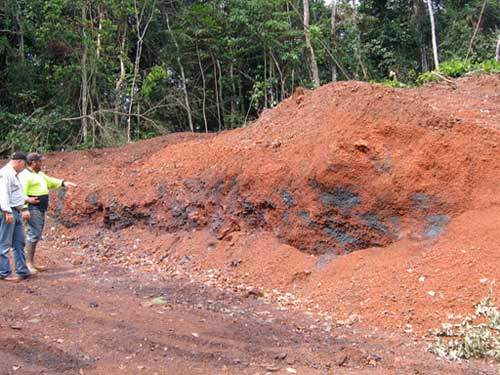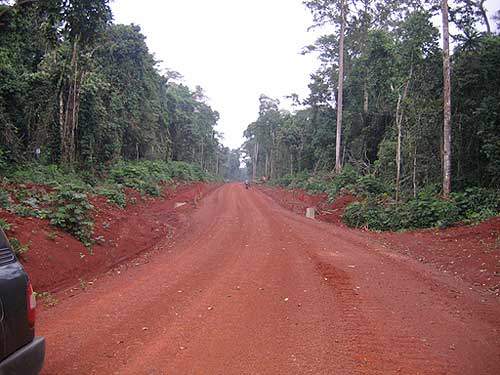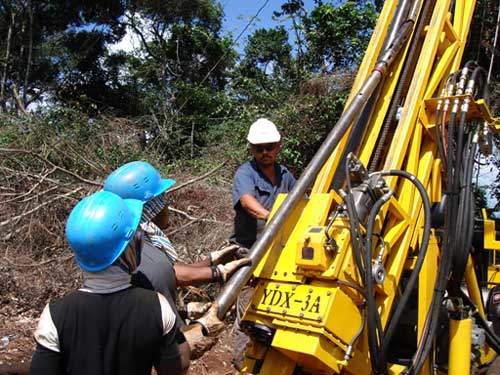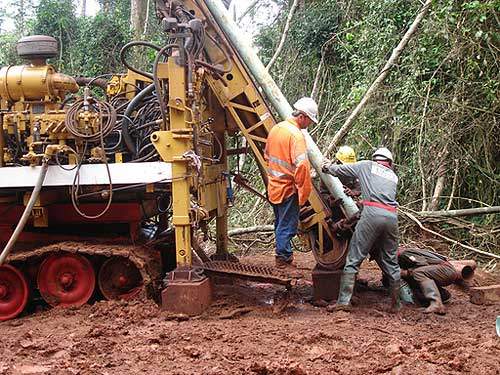The Mbalam-Nabeba iron ore project includes the development of iron ore deposits in Cameroon and the Democratic Republic of the Congo, West Africa. It is estimated to produce 35 million tonnes per annum for at least 25 years. Open-cut mining will be used to recover the iron ore.
The project is being developed by Sundance Resources whose 100% acquisition by Hanlong (Africa) Mining is under negotiation since June 2011.
Four main deposits – Mbarga, Mbarga South, Metzimevin and Nabeba – will be initially developed under the project. The majority of the resources are contained in the Mbarga and Nabeba deposits. The project also includes the Meridional, Njweng and Letioukbala deposits, which require further exploration.
The Mbalam-Nabeba iron ore project has been put on a fast-track schedule, with production scheduled to begin in 2017.
Environmental approval was obtained from Cameroon in July 2010. The definitive feasibility study for stage one and the pre-feasibility study for stage two of the Mbalam-Nabeba iron ore project was completed in April 2011.
The first stage of the project is expected to cost $4.6bn with capital pay back projected to be achieved in three years. CITIC Securities arranged the project’s finance.
Stage one of the project will be mostly a direct ore shipping project that will operate for a minimum of ten years, and stage two will operate for 15 years.
Construction on stage 1 is expected to begin in late 2014. The infrastructure to be constructed includes processing plants, stockpiling facilities and a railway system. A new port, which will handle 300,000 dead weight tonnage vessels, will be built as part of the project. The engineering, procurement and construction (EPC) contracts are yet to be awarded.
Once the project is implemented, Sundance will become one of the top ten iron ore producers in the world.
The company signed a 10-year off-take agreement with Noble Resources International in March 2014. Noble will purchase the entire direct shipping ore (DSO) produced by the mine as part of the agreement.
Reserves
The Mbalam mine is estimated to contain more than 800 million tonnes of iron ore. As of December 2012, its probable reserves are estimated at 436.3 million tonnes grading at 62.6% Fe.
The probable reserves of the Mbarga deposit are 126.95t at 63.41% iron.
The probable reserves at the Nabeba deposit are 309.3t at 62.25% iron.
Geology and mineralisation
The Mbalam-Nabeba project is characterised by two types of iron mineralisation. One is a near-surface, high-grade hematite mineralisation, and the other is an itabirite-style mineralisation.
The Mbarga deposit contains four types of mineralised zones which have different chemical compositions. The supergene zone features high quality and low-contaminant mineralisation. The surficial zone is located over the supergene zone and contains high levels of alumina. Positioned beneath the supergene zone, the transitional zone contains high silica levels. The fourth zone Phos is characterised by high levels of phosphorous.
The Nabeba deposit features three types of mineralised zones, which include the surficial zone, supergene zone and sub-grade zone. The surficial zone features high levels of alumina (4.9%). The supergene zone, the most important zone of this deposit, contains high-quality deposits in large quantities. The sub-grade zone is a discrete area featuring elevated silica and alumina levels.
Mining and processing
Exploration activities started in Cameroon in June 2007 and in the Democratic Republic of the Congo in February 2010. More than 500 holes have been drilled at the two mines using two reverse circulation rigs and a diamond drilling rig.
WorleyParsons carried out the pre-feasibility study for the first stage of the project in January 2008. A pre-feasibility study for stage two and the definitive feasibility study for phase I were completed in April 2011. The definitive feasibility study for phase II began in 2012.
The first stage of the project includes the development of the hematite deposits and the construction of a railway system and a deepwater port.
The railway system will include a 510km railway line between Mbarga and Cameroon, and a 70km rail spur to Nabeba. Phase II will include the development of the itabirite deposits.
Transport and handling
In September 2010, Sundance signed two memorandums of understanding with China Harbour Engineering Company and CRCC China-Africa Construction. The two companies will be responsible for building a deepwater port and railway line, and for supplying rolling stock for transporting the mined ore.
Recent developments of the Mbalam-Nabeba iron ore project
In November 2012, the Government of Cameroon officially permitted the development of the Mbalam-Nabeba Iron Ore Project by signing the Mbalam Convention. In December 2012, the Republic of Congo approved the Nabeba mining permit.
Earlier in 2012, Sundance signed memorandums of understanding (MoUs) with Equatorial Resources and Core Mining for sharing the infrastructure such as rail and port to be developed as part of the Mbalam-Nabeba project. Core Mining and Equatorial are the respective owners of Avima and Badondo Iron Projects, both located in Congo. Similar infrastructure sharing discussions are in place for other few iron ore projects in Congo and Cameroon as well.







